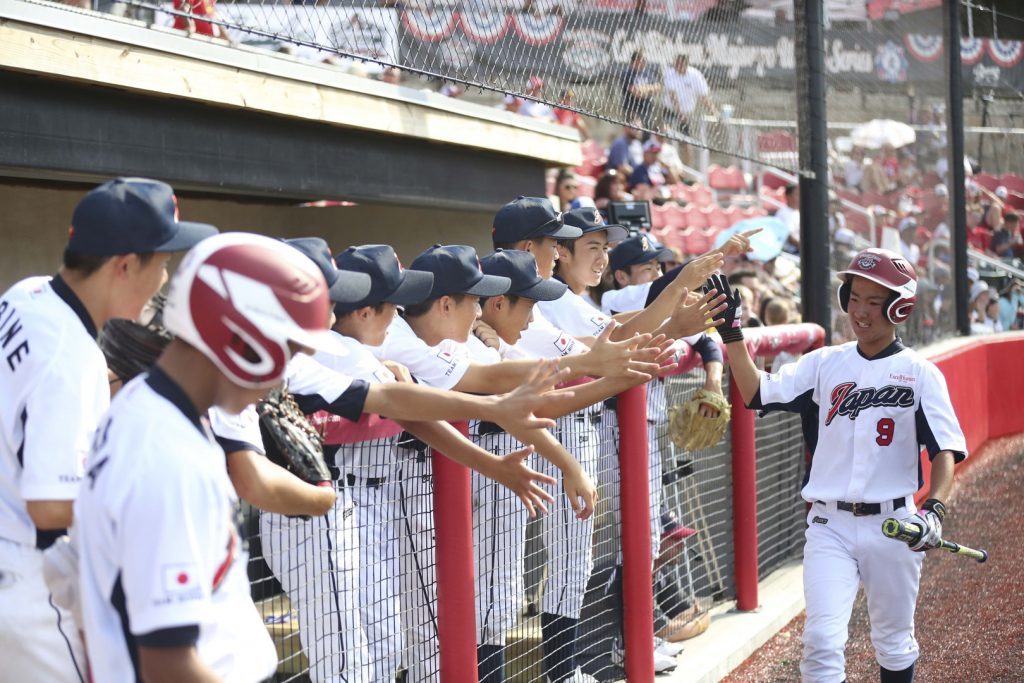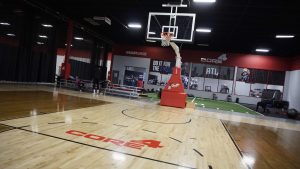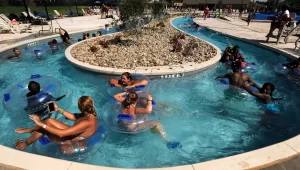It’s a pivotal moment in the game, a match up that will make or break this evening’s contest. A young pitcher, 12 years old to be exact, takes the sign and winds up for the pitch. The batter stands 50 feet away, waiting to send the pitch over the centerfield fence is up to 335 feet away. That is, if this game is being played in the Babe Ruth League. If this is Little League Majors, the batter is standing 46 feet away and that fence is about 200 feet away. If this is Pony League, the batter is standing 48 feet away and on and on. Three leagues, three different distances from the pitcher’s mound to the batter’s box and the batter’s box to the centerfield fence (there’s also different distances between bases), all centering around one age group 12-year-olds. Why is that? While other major sports have a (mostly) universal set of dimensions for all players, youth baseball dimensions vary widely depending on the league. While this can be confusing, there is a practical purpose for the varying distances and it has an impact on how young athletes develop, how youth baseball is marketed, and how facilities are constructed.
How Youth Baseball Has Changed over the Years
If you came up in youth baseball at any time prior to the early 2000’s, the distance between the pitcher’s mound and home plate and between bases largely depended on where you grew up and what leagues were available in your hometown. However, in many places, the distances used in Little League baseball, 46 feet from pitcher to home plate and 60 feet between bases, were the primary distances for players through age 12. At age 13, players transitioned to the 60’6” pitching distance. Players in high school and beyond had 90 feet between bases. However, a funny thing happened over time. Interest in preparing kids for higher levels of baseball play increased sharply. According to the Sports Fitness & Industry Association, the number of youth playing baseball increased by nearly 3 million athletes between 2013 and 2018. This, along with a focus on travel team play, has led to new approaches to preparation.
Why There’s Multiple Distances for the Same Age Group
To meet this desire, organizations, including Babe Ruth League, Inc., host leagues with varying pitching distances. “We used the 60-foot pitching distance for most of our history, but with time, we’ve adjusted. We felt that the game was changing and evolving, and kids were becoming bigger, faster, and stronger,” said Michael Solanik, Major70 World Series Director for Babe Ruth League, Inc. The Babe Ruth League has leagues for players in the 10-12 years old age range where the base path distance is 60 feet as well as those that are 70 feet. The purpose is not only to meet multiple skill levels but to also prepare athletes for higher levels of play.
The adjustment for the 10-12 years old age group pertains to arm strength. Some players have a difficult time adjusting to throwing the ball longer distances and varying the distance between the bases and the pitcher’s mound at home provides a way to gradually grow within the game. “The BRL mission is that every child should be offered an opportunity to play the game. That’s why we offer 60-70 ft distances in our leagues,” said Solanik.
Beyond arm strength, the longer pitching mound to home plate and basepath distances allow for Babe Ruth Major 70 Leagues to mimic certain aspects of the high school, college, and pro games, including leading off and balks. According to Solanik, it also prepares players for being able to make throws from third base to first because the longer distance between bases closely mirrors what players would face in the big leagues. “The longer distance gives a more natural sense of what it takes to throw a batter out from third base to first. With short distances, it’s harder and less likely that a runner can be thrown out,” said Solanik.
If you are wondering if there will ever be a uniform standard among all youth baseball leagues, experts, including Solanik, do not think it’s likely. “The base path dimensions have become a function of the brand identity for each organization. It becomes what they are known for.”
How Baseball Facilities Prepare for Multiple Leagues
Differences in baseball field dimensions not only impact player development and how leagues are marketed, it also impacts how venues are developed. When developing new baseball venues, the venue planning team at Sports Facilities Development installs two sets of base anchors and sleeves to fit bases on each field. The sleeves/base pads are positioned at the most commonly used distances based on the leagues that are in place. For leagues that don’t play as often at a specific facility, tick marks are made to denote distances and throwdown bases are used. Portable mounds are used to account for the varying distances required by different leagues.
To learn more about topics related to baseball facility development or if you have a vision for a new baseball venue or are looking to take an existing facility to the next level, contact us today at 727-474-3845.






